| |
More Manhole Covers of Iwate
Here are some more manhole covers from Iwate. First up, Rikuzentakata, a small city on the Pacific coast. I'm not sure what all the designs represent, but the lumpy things around the outside might be sea pineapples (a delicacy of Iwate that most people in Japan wouldn't consider food). 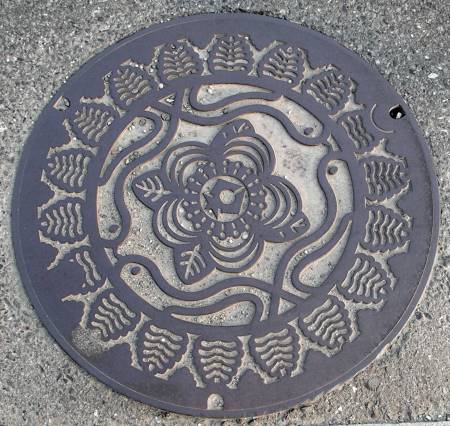 Next up, Esashi. Esashi has a famous district of old warehouses. 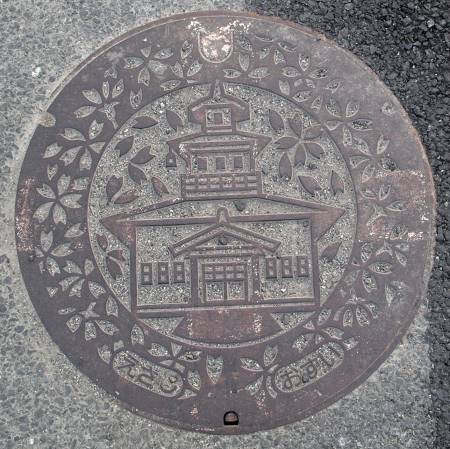 Finally, Ezuriko, a village that became part of Kitakami City in 1991. 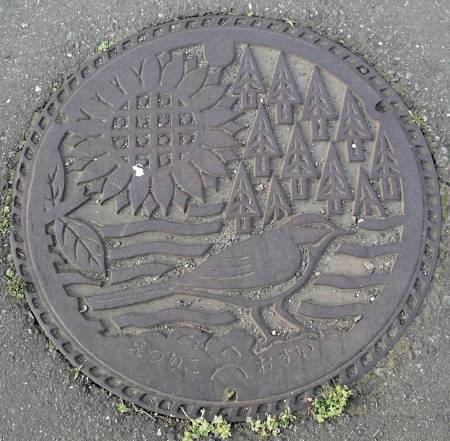
Beautiful wildflowers and pink azaleas alongside the Hitokabe River in Oshu City. 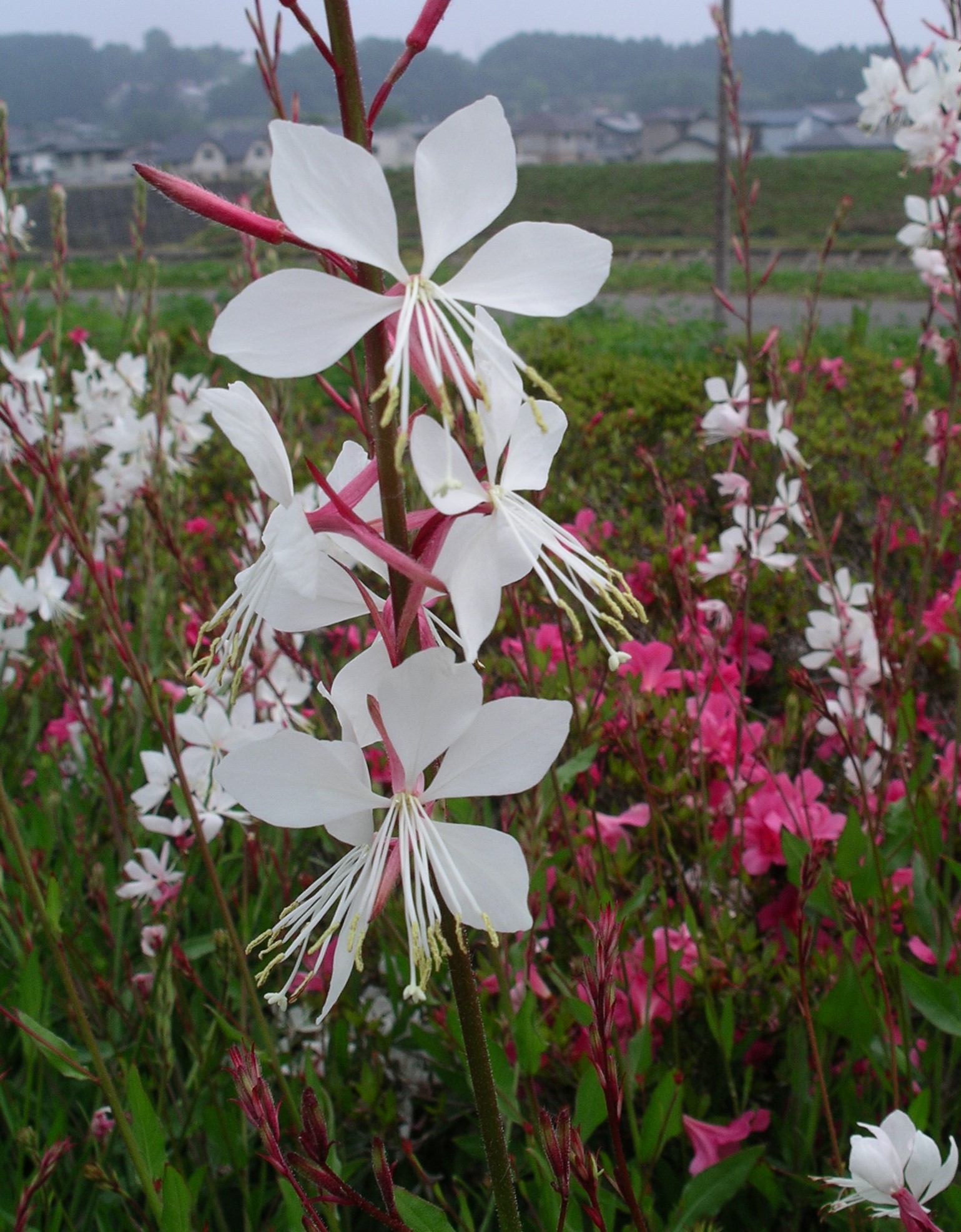
Hooked on Comics Works for Me!
Thursday, June 19, 2008, 1:55 AM GeneralPosted by stefanie Some time ago, my language partner loaned me a manga (comic) that she had been reading. It was a very useful one because it was bilingual ¡½ it had been translated into English, with the original Japanese text on the sides of each frame. I read the English at the time and enjoyed it a lot, but couldn't even begin to contemplate sorting through the Japanese. All those kanji, and who knew where the words began and ended. . . .
A couple of weeks ago, I thought I'd give reading the Japanese a go one more time before I give it back. It took a while with a lot of cross-referencing, but I read it. To quote a Japanese language reference of Matthew's: "Look Mom, I can read Japanese!" Sure, there's a lot of grammar that I missed (and who needs grammar anyway, really?), but being able to read a manga aimed at teenagers is pretty exciting. I was so excited by my newfound ability to read that I bought the second book in the manga series in Japanese only. I won't be turning into a fangirl anytime soon, but I figure if it makes me push the boundaries of my language learning, then a little manga is a good thing.
[ add comment ] permalink
Or, "Where It All Began." 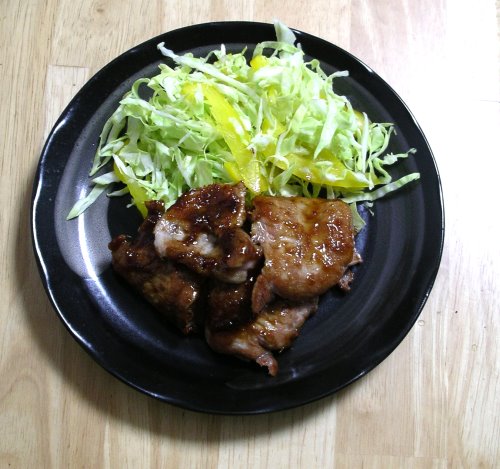 This is shouga-yaki, or ginger-glazed pan-fried pork. It was the first dish Matthew made out of his brand-new Japanese cookbook, and later, the first dish he made for me when I arrived in Kitakami. It's probably our favorite dinner, very quick, easy, and delicious — perfect on a night when we both had to work and still have some bedtime aftershocks to look forward to.
Monday, June 16, 2008, 3:32 PM GeneralPosted by stefanie Forty-eight hours later, we're continuing to feel aftershocks. They've slowed down a lot, but we still get a strongish one every few hours. One of the last reports I saw said that by last night, there had been upward of 400 aftershocks. The JMA warns of a 90 percent chance of a magnitude 5 aftershock occurring in the next three days, and a lower chance of a magnitude 6. Apparently, the new normal is feeling the earth move on a regular basis. The earthquake has made the dogs more sensitive to seismic activity. Before Saturday, intensity 1 or 2 quakes didn't faze them at all ¡½ they'd just continue snoozing away while the ground rolled. A 3 might have woken them up and made them a little curious. Now, they cause Aki to get up and move closer to us, trembling and looking worried. She's been very clingy over the last few days. As for us, we're getting used to living in a country in motion. It's kind of weird to be doing chores when an aftershock hits and you have that initial moment when you assess your options: keep washing the rice or find cover. Or you hear a rumble and pause to think: train, truck, or earthquake? We'll probably never think of an onsen in the mountains as an entirely peaceful refuge ever again, although fear won't prevent us from going. Instead, we'll adopt the Japanese mindset about such things and persevere.
Sunday, June 15, 2008, 3:45 PM GeneralPosted by matthew By now, you may have heard of the big earthquake that hit northern Japan yesterday morning. At 7.2 on the Richter scale, it ranks as a "major" earthquake. In our part of Kitakami, it reached 5-upper on the shindo scale, intense enough to cause cracks in the walls of earthquake-resistant structures. But at our house, it just spilled some coffee, knocked a few books off shelves, and caused the automatic safety device to cut off our gas. Of course, it was big enough to cause us worry. Perhaps the strangest thing about it was how it went on, and on, and on. I guess every big earthquake feels like it goes on forever to the people experiencing it, but this one really did go on for almost 20 minutes. Well, the intense shaking did, anyway; I guess it was probably actually several earthquakes in quick succession, but the vibrations from each were still going when the next arrived. Here are the earthquake maps from the Japan Meteorological Agency showing the earthquake at 8:47, and still going strong at 9:01. 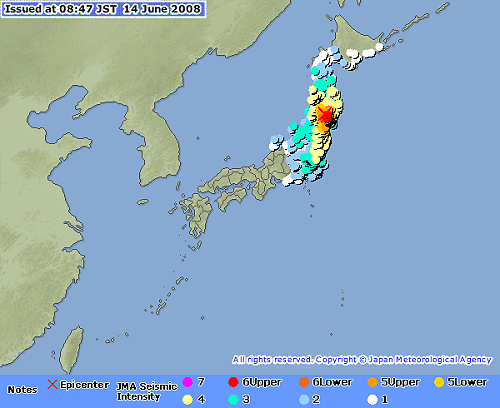 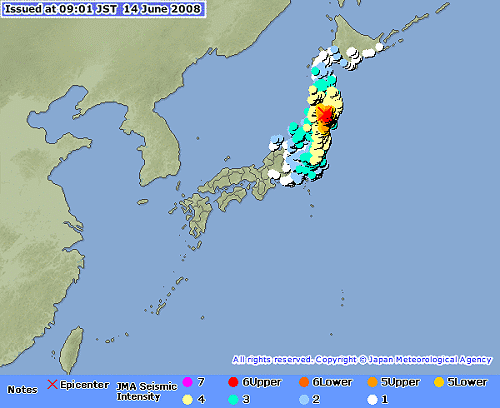 Just how close was this to us? Here's a zoomed view. 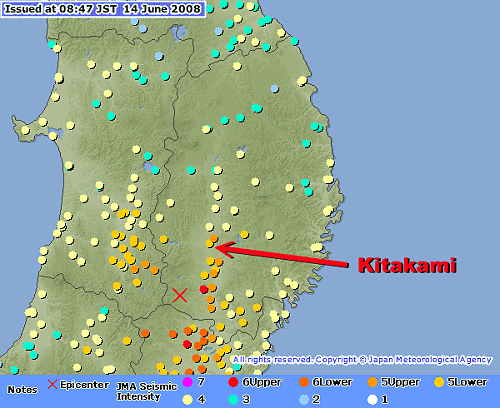 And just how (not) bad was it for us? Well, here's the shelf that moved. Some games almost fell, and a few books did fall. 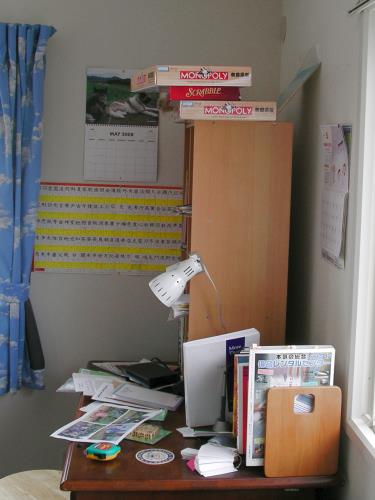 Shortly after 9, the intensity fell off. But — and this was a very strange sensation — the ground continued to gently roll and pitch for about another hour. As it continued, we picked ourselves up, checked for damage, reset the gas supply, and started to go back about our business. By the time it stopped, we were so used to it that we were still unsteady on our feet, like when you step on dry land after spending some time in a small boat. The rest of the day and night were a continuous series of aftershocks, sometimes just minutes apart. By 10pm, just 13 hours after the earthquake, there had been nearly 200 aftershocks. Many more came throughout the night, and they have been continuing today with less frequency.
Traffic safety is very important in Japan, for bicyclists as well as drivers. All cyclists are required to have headlights on their bikes. It's also illegal for people to carry umbrellas or talk on cell phones while riding a bicycle — ordering a pizza while riding your bike down a crowded sidewalk isn't likely to end well. So we were pretty amused by the guy we saw riding his bike a few nights ago. His bike had no light, save for the penlight in his hand, which he bobbed side to side as he rode. Not a legal solution, but one that got the job done — we could all see him coming.
[ add comment ] permalink
On my way back to the office last week, I had an unusual cabbie. For one thing, he was chatty, unlike the other Japanese cabbies I've encountered. For another, he looked very much like one of my bosses back in Washington, if my boss had been Japanese rather than of Mediterranean descent. It was the second time he'd been my driver, and both times I noticed the resemblance immediately. Occasionally, we come across Japanese versions of familiar faces from back home. What's interesting about these occurrences is that they cover a wide variety of Western features. My boss looks nothing like an old client, American Idol-era Clay Aiken, or Steven Spielberg, yet we've seen Japanese versions of each of them. And, as a general rule, Japanese features are pretty homogeneous, so it's not like we're keying off of similarities in hair or eye color. It would be easy to say it's a trick of the mind, that it comes from needing some connection to home, but the first J-Clay sighting occurred while we still lived in America. The likenesses must come from somewhere more fundamental than that. Anthropologists and ethnologists probably have researched this phenomenon and come to some conclusions about why we see the familiar in the apparently unrelated. For us, the non-scientists, it's just a part of the ongoing adventure — who are we going to see next?
In Japan, the sakura are not just spectacular to look at — they also herald the coming spring. While the cherry blossoms distract everyone, the rest of the plant kingdom quietly push out their buds and flowers. These photos are from the end of April.  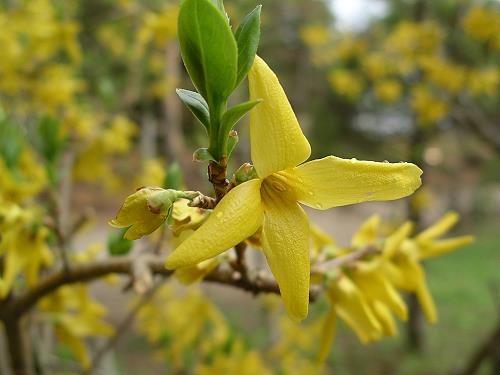 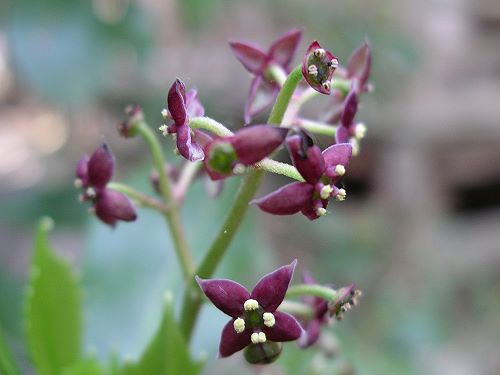
The sun setting over the Sea of Japan, as seen from Tsubakiyama, Aomori. 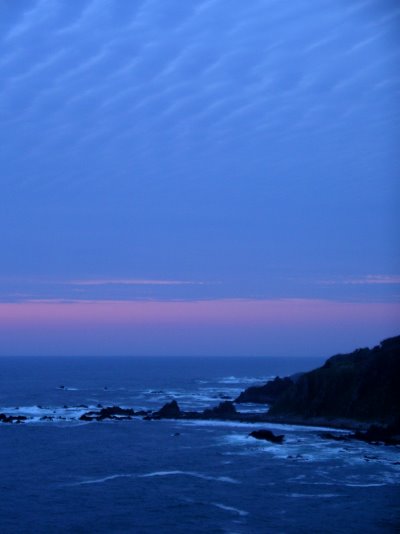
Back Next
|
|
















 Calendar
Calendar




